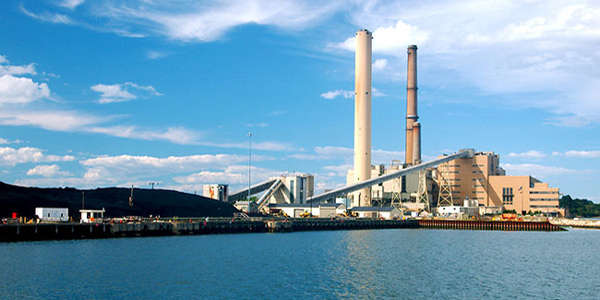By Rich Heidorn Jr.
The owners of Salem Harbor Power Station have asked FERC to dismiss allegations that the plant misled ISO-NE with supply offers it could not meet because of insufficient fuel.
FERC’s Office of Enforcement filed an Order to Show Cause on June 18, saying that owners Footprint Power should forfeit more than $2 million in capacity payments Salem Harbor Unit 4 received for a period in June and July 2013 during which the plant’s fuel supply prevented it from operating at its offered capacity. Enforcement also sought $4.2 million in civil penalties. (See Salem Harbor Plant Facing FERC Action.)
In its Aug. 2 response, Footprint’s attorneys said Enforcement “overstates” what ISO-NE expected from the plant, claiming the RTO was aware that NOx emissions limits prevented it from running at full capacity for an entire day. Enforcement also failed to consider the time it took the plant to reach full output from start-up, the attorneys wrote in a 383-page answer that includes audio recordings of conversations between plant and ISO-NE operators and a passage from Joseph Heller’s “Catch-22” (IN18-7).
“The day-ahead offers reflected [the plant’s fuel] limitations. And as the taped phone calls show, the operators repeatedly caveated their estimates about potential availability as uncertain,” they wrote.
Footprint said Enforcement overstated the maximum amount of fuel the plant could burn by more than 82%. Enforcement staff did not interview plant operators and there is no evidence investigators talked with the RTO’s operators about their expectations, Footprint said.
The company also said Enforcement’s calculations understated the amount of fuel the plant had available to burn.
“Enforcement thus offers a conundrum where every option is a violation. If Salem Harbor offers what it considers to be a good estimate of the projected output of Salem Harbor, that is deceptive because the projection is higher than anything empirically proven to be available in advance. If Footprint offers a lower level of output from Salem Harbor, but one that has been empirically proven to be available in advance, that is physical withholding. This is no idle, after-the-fact thought. The principals of Footprint were veterans of the business and regulatory landscape facing New England independent power producers. They understood the regulatory environment in ISO-NE as well as anyone. And they actually were concerned at the time that under-offering Salem Harbor 4 could expose them to withholding claims.”
The filing acknowledges Unit 4 ran low on fuel in July 2013 but noted that the plant was then less than a year from retirement. “Fuel oil had to be bought in large amounts — a barge of oil cost over $5 million in the summer of 2013. And given that the plant historically ran very infrequently, much of that money might end up wasted.” Unit 4 retired less than a year after the period in question, and it and its fuel tank have since been demolished.
Footprint said Enforcement is attempting to penalize it for running low on fuel because the plant was not hit with ISO-NE’s shortage-event penalties. “If the commission wants to create greater incentives to store fuel oil on site, it obviously can do that prospectively by changing the definition of shortage events in the ISO-NE Tariff so that they occur more frequently. The commission in fact approved just such a change in late 2013. But the commission cannot lawfully change the Tariff to make shortage events more frequent looking backwards. … Viewing things from a broader perspective, the Pay-for-Performance capacity model is not going to work as intended if Enforcement gets to pile on its own chosen sanctions, above and beyond shortage-event penalties, whenever it thinks alleged performance limitations somehow have not already been sufficiently punished.”
Footprint also said the case should be dismissed based on the five-year statute of limitations. It disagreed with Enforcement’s prior claims that the issuance of a show cause order within five years is sufficient.
It requested a meeting with the commissioners and senior staff to discuss its defense, “with or without Enforcement present.”




